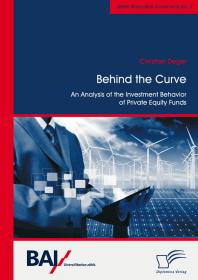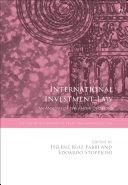Behind the Curve An Analysis of the Investment Behavior of Private Equity Funds 1st Edition by Christian Deger 3842889100 9783842889101
$50.00 Original price was: $50.00.$25.00Current price is: $25.00.
Behind the Curve An Analysis of the Investment Behavior of Private Equity Funds 1st Edition by Christian Deger – Ebook PDF Instant Download/Delivery:3842889100, 9783842889101
Full download Behind the Curve An Analysis of the Investment Behavior of Private Equity Funds 1st Edition after payment

Product details:
ISBN 10: 3842889100
ISBN 13: 9783842889101
Author: Christian Deger
In the domain of corporate acquisitions, leveraged buyouts (LBO) have gained tremendous importance since their first appearance in the late 1970’s. After having suffered from different economic downturns throughout the years, buyouts have become a major force in the worldwide economy, and reached a record accumulated transaction value of $878bn in 2007. LBOs are generally conducted by a private equity (PE) firm through a buyout fund. The fund manager raises a certain amount of equity from outside investors, and invests it into later-stage companies for an average holding period of around five years. An important characteristic of an LBO is that investments are not only financed by equity capital from the fund but, also with a significant amount of debt which is raised individually on a deal-by-deal basis. Moreover, the compensation of both fund managers, and equity investors is not based on the individual investment itself but, on the success of the whole fund. As a result, the particular conditions of buyout investments in a fund setting, as well as the distinct incentive structure of buyout funds, facilitate an increased sensitivity of fund managers with regard to the current state of their fund. This may also influence their leverage and pricing decisions on the transaction level. Corresponding research on buyout structuring is still in its infancy. While there is an increasing amount of empirical literature on the various determinants of leverage and pricing in buyout transactions, little is known about how the investment behavior of buyout funds drives these structuring decisions. A notable exception is the work by Axelson, et al. (2009), who developed a theoretical model that is based on a principal agent conflict between fund managers and outside investors. The model provides a number of predictions on how the investment behavior of fund managers impacts leverage, and decisions about prices at investment entry. The main goal of this study is to identify the f
Behind the Curve An Analysis of the Investment Behavior of Private Equity Funds 1st Table of contents:
Introduction
Leveraged Buyout Transactions
Legal Structure of Buyout Funds
Mechanics of a Leveraged Buyout Transaction
Capital Structure and Pricing in Buyouts
Principal-Agent Driven Theories
Conflicts on Company Level
Conflicts on Investor Level
Determinants Beyond the Principal-Agent Conflict
Debt Market Conditions
Reputation of Private Equity Firms
Other Determinants of Leverage and Pricing
Fund State and Investment Pressure
Fund Performance
Capital Invested
Investment Pressure and Hypotheses
Data Description
Sample Characteristics and Representativeness
Explanatory Variables
Fund Performance Variables
Capital Invested Variables
Investment Pressure Variables
Reputation Variables
Results
Basic Regression
Capital Invested Hypothesis
Fund Performance Hypothesis
Reputation Effects Hypothesis
Conclusion
People also search for Behind the Curve An Analysis of the Investment Behavior of Private Equity Funds 1st:
9 example of an investment strategy
7 investing principles
5 investment strategies
5 investment
Tags:
Christian Deger,Curve,Analysis,Investment
You may also like…
Uncategorized
Business & Economics - Investing
Student Managed Investment Funds 2nd Edition by Brian Bruce 0128178663 9780128178669
Business & Economics - Personal Finance
Business & Economics - Investing
Private Equity Demystified : An Explanatory Guide 4th Edition John Gilligan
Jurisprudence & Law - Foreign & International Law
International Investment Law: An Analysis of the Major Decisions 1st Edition Hélène Ruiz Fabri
Uncategorized
Business & Economics - Investing
Uncategorized











